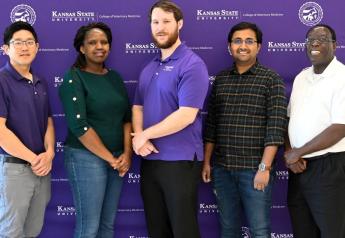AgView’s New Feature Makes Commuter Agreements a Cinch for Pig Farmers

A new feature in AgView may be just what you are looking for to save time and be more efficient on the farm. AgView, an opt-in database and dashboard technology funded by the Pork Checkoff that allows producers to securely share location and movement data with their state animal health officials so they can rapidly determine where disease is and isn't, is always adding in new features to create more value for pork producers.
The newest feature to AgView is its Swine Production Health Plan Feature – a long title for what’s commonly called a commuter agreement.
“In the pork industry, there are a couple ways to get pigs across state lines for feeding. One of those is a health paper, but the other is what's called a Swine Production Health Plan,” explains Patrick Webb, DVM, assistant chief veterinarian with National Pork Board.
The plan lays out a mechanism for any producer to work with their herd veterinarian to come up with a swine production health plan for pigs moving within the production system that basically says, “We will, as a veterinary team, be inspecting the sites these animals will be sent from and go to every 30 days. We will always make the same movements and we'll report those movements to the state animal health officials, and USDA’s animal health officials in both states.”
Although that may seem fairly simple, implementation is anything but simple, Webb points out.
“You need eight different signatures on a plan in order to have them approved. You need signatures from the attending vet, the state vet, the area vet in charge in one state, the state vet and area vet in charge in the other state, plus the herd veterinarian and the people managing both locations. All in all, eight signatures, one plan, a whole bunch of emails, some revisions asked here, change this over there,” Webb says. “Then, it all has to be circulated around again.”
It's quite complicated to get approval for these plans due to the sheer number of people that have to approve it, he adds.
“We talked to a lot of users of AgView on the producer side and on the state vet side and they said making this process easy in AgView would be a real value,” Webb says. “So, Pork Checkoff invested dollars in the development of that program, and I’m happy to say that it's up and running.”
They piloted the new feature with the Ohio Department of Agriculture, the Indiana Department of Agriculture and a producer who has a current plan set up between Ohio and Indiana.
“The fun part was watching the pilot participants use the new feature to simplify a complicated process to save producers and animal health officials time in setting the plans up, getting them approved and monitoring the movements in real time,” Webb says. “Access to real time movements in AgView will always trump spreadsheets in a file related to the speed of a traceback when time is of the essence in a potential FAD outbreak.”
Read More:
Traceability is Not New: What it Means to the Pork Industry







